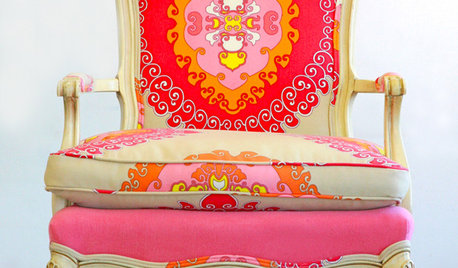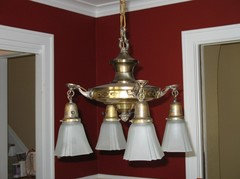Cleaning An Old Light Fixture
vjrnts
17 years ago
Featured Answer
Comments (25)
kec01
17 years agovjrnts
17 years agoRelated Professionals
Bethpage Kitchen & Bathroom Designers · Bonita Kitchen & Bathroom Designers · East Peoria Kitchen & Bathroom Designers · Waianae Kitchen & Bathroom Designers · 93927 Kitchen & Bathroom Remodelers · Camarillo Kitchen & Bathroom Remodelers · Glen Carbon Kitchen & Bathroom Remodelers · Hickory Kitchen & Bathroom Remodelers · Luling Kitchen & Bathroom Remodelers · Manassas Kitchen & Bathroom Remodelers · Oceanside Kitchen & Bathroom Remodelers · Clayton Architects & Building Designers · De Pere Architects & Building Designers · Johnson City Architects & Building Designers · Washington Architects & Building Designersbrickeyee
17 years agovjrnts
17 years agobrickeyee
17 years agojcin_los_angeles
17 years agokec01
17 years agobrickeyee
17 years agovjrnts
17 years agovjrnts
17 years agoquiltglo
17 years agobrickeyee
17 years agovjrnts
17 years agobrickeyee
17 years agokec01
17 years agovjrnts
17 years agovjrnts
17 years agokec01
17 years agovjrnts
16 years agoron6519
16 years agovjrnts
16 years agojudeNY_gw
16 years agoHU-459876305
4 years agolast modified: 4 years agokudzu9
4 years ago
Related Stories

FURNITUREOld Furniture: Clean, Reupholster or Replace It?
A veteran upholstery cleaner weighs in on the options for found, inherited and thrift store furniture
Full Story
HOMES AROUND THE WORLDHouzz Tour: Easy Mix of Old and New Revives a Family Townhouse
Contemporary furniture and modern fixtures blend with period architecture in this large open-plan home in London
Full Story
BATHROOM DESIGNGuest Picks: Everything Old (Bath) is New Again
Vintage-inspired fixtures and accessories give a new bathroom polish and a nod to the past
Full Story0

HOUZZ TOURSHouzz Tour: A Modern Twist on a Century-Old Brooklyn Brownstone
An architect takes a ‘hard lines with soft edges’ approach to create a warm and cozy yet cleanly defined New York home
Full Story
LIGHTINGYour Guide to Common Light Fixtures and How to Use Them
Get to know pot lights, track lights, pendants and more to help you create an organized, layered lighting plan
Full Story
DECORATING GUIDESObjects of Desire: 8 Gorgeous Globe Light Fixtures
Conjure the music of the spheres with everything from a single globe light to a constellation of pendants
Full Story
DECORATING GUIDESOn Trend: Light Fixtures Take to the Branches
Tree branches in nature are inspiring chandeliers and table lamps at home, in both realistic and stylized interpretations
Full Story
HOUZZ TOURSHouzz Tour: Loving the Old and New in an 1880s Brooklyn Row House
More natural light and a newly open plan set off furnishings thoughtfully culled from the past
Full Story
PRODUCT PICKSGuest Picks: Everything Old-World Is New Again
Give even a new build a romantic history with lighting fixtures, hardware and drapes that recall the Old Country
Full Story
LIGHTING15 Ways to Create Drama With Light Fixtures
Use lights as artful decorating elements, and watch them draw attention for more than their ability to illuminate
Full StoryMore Discussions










kec01